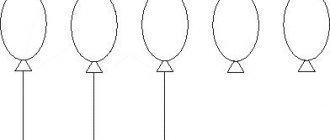Features of folk crafts
The toy is made from linden, birch or alder. The workpiece is polished and primed. It is painted by the artist with a variety of paints: aniline, oil, gouache. The last option is the most popular. Then the detachable dolls are opened with varnish. Usually there are 6-8 of them in one set. Although there are options for 25 or more pieces. The completeness depends on what the author came up with and his skill.
The largest Russian nesting doll was made in Semenov. Or rather, one set consisting of 56 dolls. The first matryoshka has a height of about a meter, the last is no more than a pea. According to other sources, Semyonov craftsmen made a set of 72 figures for the Expo 1970 exhibition in Tokyo. We must pay tribute to the Chinese too. In one of the country's amusement parks there is a giant matryoshka doll 30 m high. This is not a toy, but a building with an area of 3200 m². An overgrown matryoshka was included in the Guinness Book of Records.
In our country there are several museums that allow us to trace the history of the traditional painted nesting doll. For example, the exhibition in Semenov presents decorative dolls from Russian craftsmen from different regions. There are museums in Moscow, Kalyazin, Nizhny Novgorod, Sergiev Posad, Voznesensk.
Matryoshka dolls have become the most popular Russian souvenir in the world. They are gladly taken abroad as gifts and for collectors. 60% of Semenovsk products are exported. The secret is simple. The doll is an example of folk talent, often simple-minded, but multifaceted. She is amazing and unique. The fishery gained worldwide fame in 1900, when it won a medal at the World Exhibition in Paris. And 5 years later, a nesting doll shop opened in this city.
How the matryoshka appeared and what came of it
Wikipedia says that the Russian matryoshka is a toy.
Although most people, especially foreigners, perceive it as a souvenir. This is what saved her from extinction. On the other hand, it did harm. Initially, the nesting dolls were “dressed” in folk clothes. They could be used to study ethnography. Then they began to paint them in any way they liked, sometimes in the form of politicians and even superheroes. This made the toy kitschy. Abroad, the nesting doll is called Russian Doll - “Russian doll”. And sometimes affectionately Babushka Doll. We are used to the toy. It seems as if it is many centuries old and is originally Russian. But no. It appeared in Russia about 130 years ago, in the 90s of the 19th century. At that time, national identity was revived in the Russian Empire and the so-called “Russian style” became popular.
The history of the nesting doll began in Japan. From there they brought the first detachable doll - a round wooden Japanese Fukurum with a big head. The toy could be opened, and inside there was the same one, but smaller, etc. A very cheerful, positive and funny wood craft. Our masters liked it.
Our doll was dressed in a sundress with an apron, a scarf was tied on her head, and a pretty face appeared. And they began to call her by the common Russian name - Matryosha (Matryona). Further, the history of the Russian nesting doll develops, the doll becomes popular. At first it was made in Moscow workshops. And a few years later the doll was already considered a popular folk craft from Russia. Everyone immediately forgot that the painted toy was Japanese in origin.
It is believed that the first nesting doll was made by toy turner Vasily Zvezdochkin. He carved a wooden figurine. The artist Sergei Malyutin, a promoter of the “Russian style,” came up with clothes for her - a sundress and a scarf. That first Russian nesting doll, a peasant girl, held a black rooster in her hands and had 8 seats. A boy was hiding behind the girl, then a girl again. The eighth figure was a tiny swaddled baby.
Some researchers do not support the Japanese origin of the nesting doll. Because folk craftsmen have been making split Easter eggs from wood for a very long time. And the toy is the same egg, only with a flat bottom.
Russian matryoshka at home and in kindergarten
Several generations of children enjoyed playing with the doll. Nowadays games are a bit of a thing of the past. But in vain, the detachable figurine has a huge developmental effect. It is environmentally friendly and safe for children. Develops movements, perception, tactile sensations and mental abilities, trains the muscles of the fingers. The toy can be recommended as one of the first in a baby’s life.
With the help of figures you can explain the concepts of “big and small”. With them, the child learns to play role-playing games - in a family with a mother and several children. To prevent the baby from losing interest, it is better to hide the nesting doll after playing. There are many games, they are divided according to the age of the children. For example, babies under 1 year old will be interested in the following:
- We teach the child to open and close the halves. Be surprised and happy when there is something inside.
- We show that the halves should fit each other. If this is not the case, the pupa will not be collected.
- We voice: “The baby nesting doll is scared, she needs to be hidden in a larger doll.” Let the child figure out what to invest where.
- When the baby is not in the room, we place the toys in a visible place. And then we ask him to find the lost sisters.
With the help of figures you can teach children 2-3 years old. There are more games for them. Eg:
- We suggest arranging the dolls by height, let them go somewhere. When they go in the opposite direction, let them line up in the reverse order.
- We arrange toys according to height and forget one. Let the baby put it in place.
- We trace the bases of the nesting dolls on paper. These will be the “chairs” around the table. We ask the child to seat the dolls on chairs.
- If there are two sets of nesting dolls, you can mix them and ask your child to sort them. An option is to arrange them in pairs according to height.
- We explain the concepts of “higher-lower”, “more-less”, “inside-outside”, “right-left”. And then we ask questions on the topic, placing the nesting dolls in different ways.
For older children, toys help develop creativity. The blanks can be painted. Games for children 3-4 years old:
- Let's learn to count. We put beads inside the nesting dolls and write the quantity on the bottom. Then with the child we count how many there actually are.
- We play out role-playing situations (in the family, on the playground, etc.).
A real trade souvenir
The name Matresha was not chosen without reason. It is close to the word “mother” and is associated with a large family. These dolls have become a symbol of motherhood and fertility. Nowadays there are several types of traditional matryoshka dolls, they compete with each other. Three popular ones:
- Semenovskaya. In the town of Semenov (Nizhny Novgorod region) there is. The first Semenov matryoshka was made in 1922; waste from spoon production was used for the figures. The Semenovites adopted the skill from the Muscovites. The difference between the Semenovskaya doll is the yellow-red background and bright bouquets of flowers on the apron.
- Zagorskaya, or Sergiev Posadskaya. The city near Moscow has long been the center of the toy industry. He quickly learned the intricacies of matryoshka production. Zagorsk nesting dolls seem rustic, but they are more than similar to the first Russian versions. The peculiarity of the toy is that it often has burnt, rather than drawn, contours. She is dressed in a sundress, an embroidered blouse, a painted scarf and, of course, an apron.
- Polkhov - Maidanskaya. There is no one specific workshop in the village; toys are made in every yard. Initially, after the War of 1812, in Polkhovsky Maidan (Nizhny Novgorod region) wooden utensils were created on lathes. Matryoshka dolls came here from Sergiev Posad in the early 1900s. They are not wearing a sundress and an apron. But on the front they have an oval painted with flowers or other designs.
There is a Vyatka matryoshka doll, on which drawings are made simultaneously with paints and rye straws. This is the most difficult type. The Nolinsky variety is characterized by rich colors and bright bouquets of flowers. The Tver collapsible doll looks like a character from children's fairy tales: the princess, the Snow Maiden, Vasilisa the Beautiful. These toys take longer to paint than others, they are the most artistically interesting.
Sometimes figurines are classified according to the type of painting performed by the artist. It could be Gzhel , Khokhloma (I also wrote about it), Gorodets. There are designer dolls. They can represent politicians, girls, families. Sometimes they order painting from masters so that the faces have a portrait resemblance. These toys don't follow the rules. At one time, famous painters tried to paint nesting dolls: Vrubel, Vasnetsov and others.


